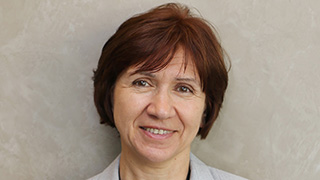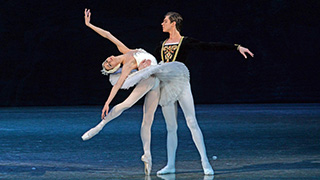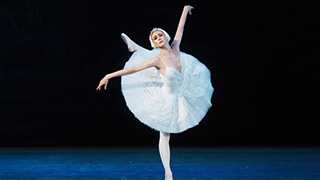"History of the Russian Ballet"
Wednesday, February 14, 2024
 On Thursday, February 22, at 6:30 p.m., in Fahy 236, the Slavic Club, will be hosting a lecture, "History of the Russian Ballet" by Irina Kazakevich,
Ph.D., a faculty member of Seton Hall University’s Department of Languages, Literatures and Cultures.
On Thursday, February 22, at 6:30 p.m., in Fahy 236, the Slavic Club, will be hosting a lecture, "History of the Russian Ballet" by Irina Kazakevich,
Ph.D., a faculty member of Seton Hall University’s Department of Languages, Literatures and Cultures.
Russian ballet has a rich and influential history that dates back to the 18th century. Here are some key points in the history of Russian ballet:
Early Beginnings (17th Century): Ballet was introduced to Russia during the reign of Peter the Great in the late 17th century. The first Russian ballet performance is believed to have taken place in 1673.
 Imperial Ballet (18th-19th Centuries): The Imperial Ballet School, now known as the
Vaganova Academy of Russian Ballet, was established in 1738. This school played a
crucial role in the development of Russian ballet. During the 19th century, under
the influence of French choreographer Marius Petipa, the Imperial Ballet became renowned
for its grand ballets, such as "Swan Lake," "The Nutcracker," and "The Sleeping Beauty."
Imperial Ballet (18th-19th Centuries): The Imperial Ballet School, now known as the
Vaganova Academy of Russian Ballet, was established in 1738. This school played a
crucial role in the development of Russian ballet. During the 19th century, under
the influence of French choreographer Marius Petipa, the Imperial Ballet became renowned
for its grand ballets, such as "Swan Lake," "The Nutcracker," and "The Sleeping Beauty."
Ballet Russes (Early 20th Century): The early 20th century saw the emergence of the Ballets Russes, a groundbreaking ballet company founded by Sergei Diaghilev in 1909. This company included notable Russian dancers and choreographers, such as Vaslav Nijinsky and Michel Fokine. The Ballets Russes had a significant impact on the development of modern ballet and brought Russian ballet to international prominence.
 Soviet Era (20th Century): The Russian ballet continued to flourish during the Soviet
era. The Bolshoi Ballet and the Mariinsky Ballet (formerly the Kirov Ballet) were
two of the most prestigious ballet companies in the world. Many renowned dancers,
such as Rudolf Nureyev and Mikhail Baryshnikov, emerged from the Soviet ballet tradition.
Soviet Era (20th Century): The Russian ballet continued to flourish during the Soviet
era. The Bolshoi Ballet and the Mariinsky Ballet (formerly the Kirov Ballet) were
two of the most prestigious ballet companies in the world. Many renowned dancers,
such as Rudolf Nureyev and Mikhail Baryshnikov, emerged from the Soviet ballet tradition.
Contemporary Ballet (Late 20th Century-Present): After the fall of the Soviet Union, Russian ballet continued to evolve. New choreographers and dancers emerged, and there was an increased focus on innovation and experimentation in both classical and contemporary ballet.
Today, Russian ballet remains a powerful force in the world of dance, with companies like the Bolshoi Ballet and the Mariinsky Ballet continuing to showcase classical masterpieces and new works. The Vaganova Academy also maintains its reputation as one of the world's leading ballet schools.
Everyone is welcome! Slavic food will be served!
Categories: Arts and Culture
